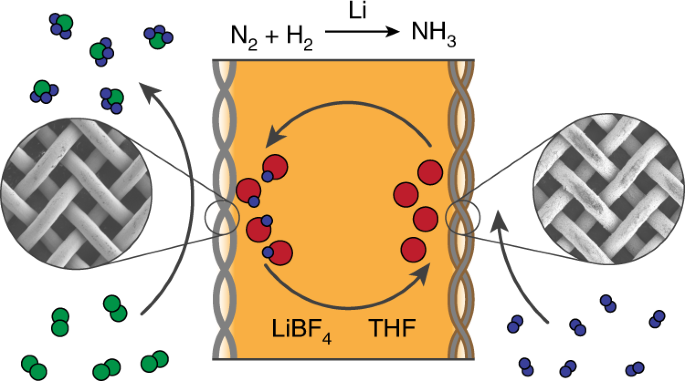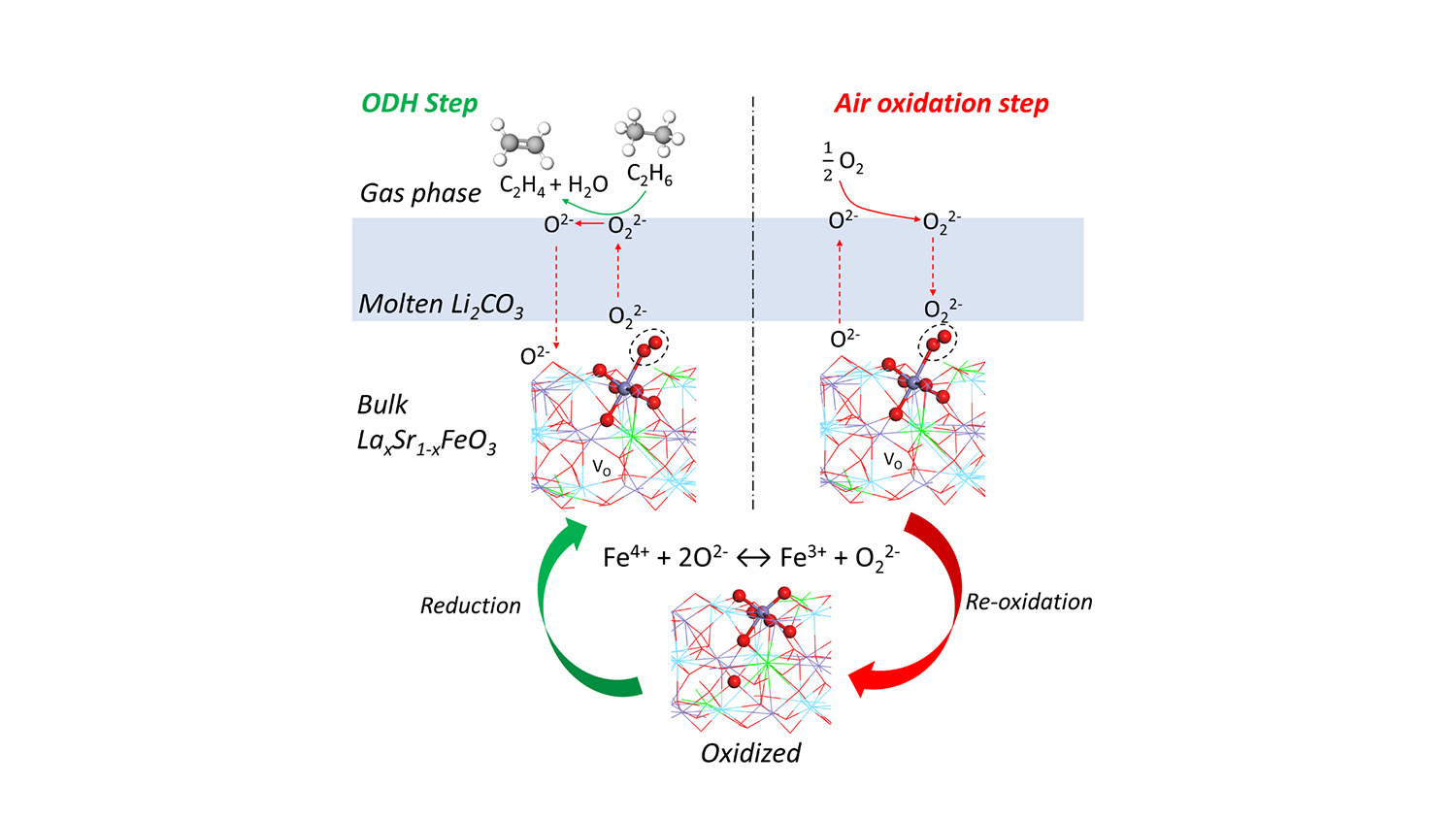2020/5/4 マサチューセッツ工科大学(MIT)

・ MIT が、アンモニアの小規模オンサイト製造を可能にするシステムを開発。
・ サハラ砂漠以南等、遠隔地や農村地域での同システムによる化学肥料の地産地消のアプリケーションを想定。大規模な肥料製造施設からの輸送コストの問題のため、これらの地域では化学肥料の入手が困難となっている。
・ 世界の化学肥料は、非反応性の窒素ガスを高温度(500℃)・高圧(200atm)下で水素ガスに反応させてアンモニアを作るハーバー・ボッシュプロセスにより、大規模な工場で製造されている。一日当たり数千トンのアンモニアを製造できるが、工場の稼働にはコストがかかり、CO2 を大量に排出。大規模に生産される化学物質の中でも、アンモニアは GHGs の最大の排出源となっている。
・ 同大学では、電力の使用により、ハーバー・ボッシュ法と同等の効果の達成を試みる。電圧を加えることで起こる反応の平衡の変化がアンモニア生成に有利に働くことが過去の研究でわかっていたが、コストと持続可能性に課題があった。
・ 常温・常圧で同反応を試みるこれまでの研究の多くでは、リチウム触媒を使用して窒素ガス分子の強力な三重結合を切断し、その結果得られた窒化リチウムを有機溶媒からの水素原子と反応させてアンモニアを生成。しかし、有機溶媒のテトラヒドロフラン(THF)は高価で、反応で使い切るため、常に交換する必要がある。
・ 今回、水素原子源の THF の代わりにエタノール中の水素と窒化ガスの反応を電極表面で促進する、リチウム触媒をコーティングしたメッシュ状の電極を開発。リチウムが媒介する一連の反応ステップにより、メッシュに拡散する窒素ガスをアンモニアに転換。同システムでは、水素と窒素の液体に溶けにくい性質にもかかわらず、それらの反応速度が比較的高い。さらに、水素源として水電解の利用も実証した。
・ 同システムは研究室の机上に載るほどの小型だが、複数のモジュールを繋げれば、より多量のアンモニア製造にスケールアップできる。現在約 2%である反応のエネルギー効率向上が今後の課題(ハーバー・ボッシュ反応では 50~80%)。
・ 同システムのアプローチは、エネルギー貯蔵の手段としての可能性も提供。風力や太陽光の発電により、貯蔵や輸送が容易な液体燃料としてアンモニアを製造する。
・ 本研究には、米国科学財団(NSF)および MIT Energy Initiative Seed Fund が資金を提供した。本研究の基礎となった過去の研究は、MIT の Abdul Latif Jameel Water and Food Systems Lab が支援した。
URL: http://news.mit.edu/2020/cheaper-fertilizer-production-0504
<NEDO海外技術情報より>
(関連情報)
Nature Catalysis 掲載論文(アブストラクトのみ:全文は有料)
Non-aqueous gas diffusion electrodes for rapid ammonia synthesis from nitrogen and watersplitting-derived hydrogen
URL: https://www.nature.com/articles/s41929-020-0455-8
Abstract
Electrochemical transformations in non-aqueous solvents are important for synthetic and energy storage applications. Use of non-polar gaseous reactants such as nitrogen and hydrogen in non-aqueous solvents is limited by their low solubility and slow transport. Conventional gas diffusion electrodes improve the transport of gaseous species in aqueous electrolytes by facilitating efficient gas–liquid contacting in the vicinity of the electrode. Their use with non-aqueous solvents is hampered by the absence of hydrophobic repulsion between the liquid phase and carbon fibre support. Herein we report a method to overcome transport limitations in tetrahydrofuran using a stainless steel cloth-based support for ammonia synthesis paired with hydrogen oxidation. An ammonia partial current density of 8.8 ± 1.4 mA cm−2 and a Faradaic efficiency of 35 ± 6% are obtained using a lithium-mediated approach. Hydrogen oxidation current densities of up to 25 mA cm−2 are obtained in two non-aqueous solvents with near-unity Faradaic efficiency. The approach is then applied to produce ammonia from nitrogen and water-splitting-derived hydrogen.



